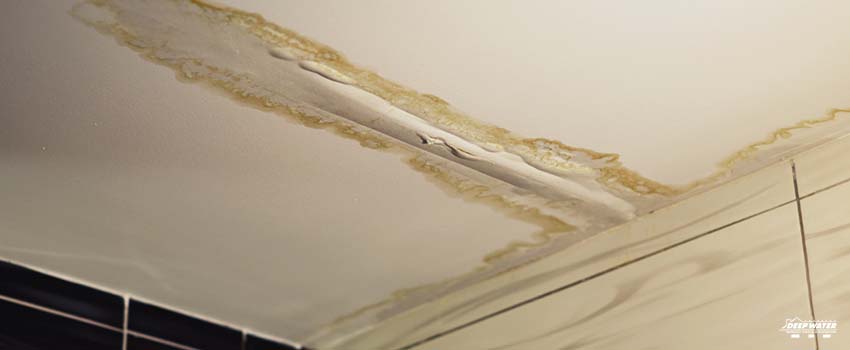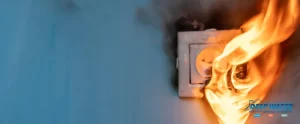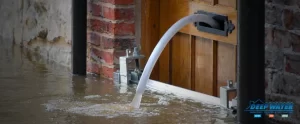Ceiling cracks don’t always indicate serious damage to your home. It is because all structures settle in some way soon after getting built and will consequently produce different types of ceiling cracks. Thus, if you notice cracks on the ceiling, you need not be worried about them right away. The condition will still depend on how large the crack is, what it looks like, and where it is located.
What Do Cracks in the Ceiling Mean?
Most ceiling cracks in residential homes are cosmetic and do not necessarily indicate a bigger problem. However, larger cracks could be signs of structural problems. The shape and size of the cracks should be checked as these can provide clues on the possible causes and what can be done about them.
Causes of Ceiling Cracks
Ceiling cracks are usually due to either structural damage or natural settling. However, other factors can also cause the cracks, including the following:
1. Old House
Like all things, your house also grows old. Wear and tear, which includes foundation settlement, occurs naturally as buildings age. It leads to cracks, not only in the ceiling but also in the wall and floor.
2. Heavy Ceiling
Having more than one bathroom on the second floor can become too heavy for the ground floor ceiling to carry. Bathrooms often contain heavy items, such as bathtubs and sinks, resulting in cracks in the ceiling that support them.
3. Faulty Drywall
Cracks in the ceiling drywall can develop when its joints aren’t adequately taped together. It usually happens when the installer doesn’t use enough drywall glue.
4. Moisture Damage
A strong storm that sweeps through your area can bring an excessive amount of water. Too much moisture can damage your ceiling and produce unsightly structural ceiling cracks.
5. Foundation Issues
Ceiling cracks can also be caused by foundation settlement. The cracks develop because, during the settling period, stress is placed on the ceiling to keep a structure from collapsing.
Types of Ceiling Cracks
All homes and buildings, whether they are made of wood, steel, or concrete, will move at some point. This movement is imperceptible and is caused by various factors, including temperature change. These cause the soil beneath the structure to shrink or expand, resulting in wall and ceiling cracks.
Below are the different ceiling cracks you’ll likely encounter when your home moves without knowing about them.
1. Straight Ceiling Cracks
These are plaster ceiling cracks that are oriented in a straight line as if they were made with the use of a ruler. They usually follow the straight edge along the joint of the drywall tape and are generally caused by insufficient plaster use during the drywall installation. The plaster tape did not stick to the joints because insufficient mud was used. This caused the plaster to peel off due to a lack of strength.
2. Hairline Ceiling Cracks
Of the different ceiling cracks, these are the smallest and most visible that you’ll find in your drywall ceiling. They look almost like someone has painted a strand of hair on the drywall.
Most hairline cracks in ceiling causes are directly related to water absorption and plaster expansion. With the latter, continuous expansion and shrinkage reduce the adhesive properties of drywall mud, resulting in small cracks. Although they can be irritating, hairline ceiling cracks do not indicate structural damage.
3. Spiderweb Ceiling Cracks
These are ceiling cracks that branch out in a spiderweb-like pattern. They are often a sign of foundation settlement, indicating compromised structural integrity.
When there is an uneven settlement of the foundation, it puts undue strain on a given structure. It is then transferred to the framing, the drywall, and the ceiling, ultimately leading to spiderweb cracks.
4. Discolored Ceiling Cracks
These ceiling cracks are yellowish or brownish and almost always indicate water damage. This is regardless of whether the cracks are due to a roof leak or a busted pipeline. Either way, discolored ceiling cracks can feel damp, depending on the leak’s extent.
While these types of ceiling cracks don’t always indicate serious structural damage, mold growth and spalling are likely if they are accompanied by excessive moisture. Depending on where and how large the leak is, you should have this fixed before you begin repairs on your ceiling.
5. Bowed Ceiling Cracks
A ceiling that is bowing or scarred by large, obtrusive cracks in the middle is likely to have severe structural damage. These are dangerous ceiling cracks caused either by heavy water damage or excess weight above the ceiling.
If the crack is due to foundation settlement, this can also cause your ceiling to move because of too much strain placed on the trusses. To check if there is a shift or movement in your foundation, you will need to contact a specialist.
6. Truss Ceiling Cracks
These are cracks found between the ceiling and the wall. They usually appear as if the trusses are pulling away from your walls. It happens when the truss gets lifted, creating an unsightly gap between the ceiling and the wall.
Ceiling trusses are designed to adapt to temperature and humidity changes. Trusses can also move with the material’s expansion and contraction if you have a wooden ceiling. Sometimes, however, weather fluctuations, including heavy or extreme winds, can cause the trusses to pull away. It is especially true if the ceiling is not correctly attached to the drywall.
Who to Call For Ceiling Cracks
Structural engineers or builders are the professionals you should contact if you find cracks in your ceiling that appear serious. They will come out and inspect the affected area, then determine if there is structural damage to your ceiling.
Key Takeaway
A crack in your ceiling can be alarming when you first notice it. However, since there are many types of ceiling cracks, it’s best first to determine if what you have is just a minor crack or one that should be referred to a professional.
It often results in small cracks that can appear on the ceiling and around the foundation of your house. These cracks are usually not indicative of a structural problem, but it is important that you monitor them. This will allow you to recognize if these cracks can lead to disasters like water damage, which will require the services of restoration experts. It is also a good idea to remember that all structures, including newly-built homes, settle into the soil eventually.
For the best water damage restoration service, contact Deep Water Emergency Services and Restoration.
Cracked ceilings can lead to leaks, especially during a heavy downpour. If not addressed immediately, water damage can become imminent. Thankfully, you have Deep Water Emergency Services and Restoration to help you out when this happens.
Our water damage restoration Dallas team is composed of restoration specialists who have extensive experience in handling this type of disaster. Count on us to deliver the results you need when water damage hits your property. Call us now.






